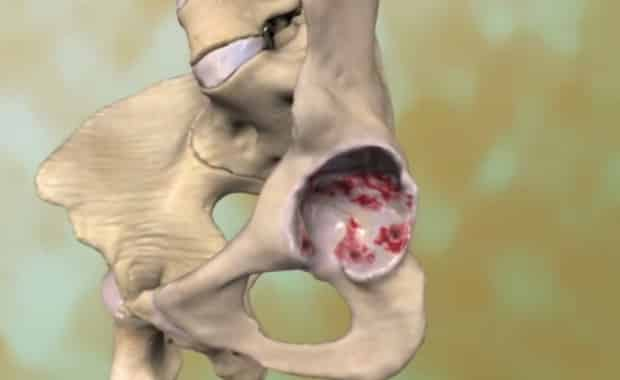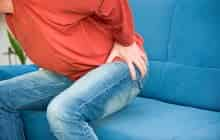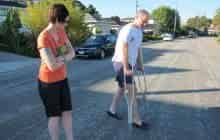
Osteoarthritis, also known as “wear and tear” arthritis is a degenerative disease in which the surface cartilage of a joint wears away eventually leaving just bone beneath it exposed. Healthy cartilage acts as padding in the joint and under normal conditions is perfectly smooth. When the cartilage deteriorates, it becomes rough and causes the pain people associate with having arthritis.
Osteoarthritis is the most common form of arthritis affecting millions of people around the world.1 As the disease advances, the condition can become extremely painful and debilitating. In this occurs, surgery may be recommended by your doctor to alleviate the pain.1,2,3- Discomfort and stiffness in your groin, buttock, or thigh upon waking.
- Pain flares up when you’re active, and calms when you rest.
- Loss of flexibility and less range of motion in the hip.
- You may feel a grating sensation when you move.
- Swelling stiffness and warmth in the hip area.
Causes1,2,3
- A family history of the disease increases the likelihood of developing osteoarthritis.
- Osteoarthritis usually goes hand-in-hand with aging, so older people and the elderly are more likely to have symptoms.
- Very overweight and obese people are more likely to have osteoarthritis.
- An injury can lead toward developing osteoarthritis, even years after it occurs.
Osteoarthritis has been known to occur in people who have no risk factors and even the young.
Treatment
If you experience arthritis symptoms it is wise to see your doctor who will determine how much the disease has progressed and will help you create a plan of action for managing your pain. While you cannot reverse the effects of osteoarthritis, early treatment may help you avoid pain and disability, and slow the progression of the disease. In cases of severe osteoarthritis, surgery may be necessary.2
Non-surgical treatment3
- Resting your hip and avoiding overuse which can aggravate your condition.
- Regular, gentle exercise like swimming or easy cycling can help keep your hip functioning and maintain strength and range of motion.
- Use over-the-counter medications like acetaminophen (paracetamol or Tylenol) may help manage pain.
- A full night’s rest each night helps your body recover from stress.
- Extra weight puts more stress on your hip and other weight-bearing joints such as your knees. Losing weight if you’re overweight will reduce the stress.
- More advanced osteoarthritis pain may require prescription medication to manage the pain and delay the need for surgery.
- Joint lubricating injections performed by your doctor can greatly reduce pain and have been known to provide relief for up to several months.
Surgical treatment
In later stages of osteoarthritis it may be necessary to consider surgical treatment, especially if the pain has become debilitating and your lifestyle greatly compromised.3 Your doctor may suggest a total hip replacement as a means of alleviating your pain and restoring your quality of life. Total hip replacement surgery involves removing sections of diseased bone within your hip and replacing them with precision engineered implants that will relieve the pain and improve your ability to walk.3 After a rehabilitation period of about 8 weeks you should notice improvements in your ability to move about independently and without the pain you previously experienced.
More about surgical procedures and other hip treatments >>
Sources
- Mayo Clinic, “Osteoarthritis” http://www.mayoclinic.com/health/osteoarthritis/DS00019/DSECTION=symptoms
- University of Washington Orthopaedics and Sports Medicine, “Osteoarthritis of the Hip” http://www.orthop.washington.edu/?q=patient-care/articles/hip/osteoarthritis-of-the-hip-hip-arthritis.html
- AAOS, American Academy of Orthopaedic Surgeons “Osteoarthritis of the Hip” http://orthoinfo.aaos.org/topic.cfm?topic=a00213
Filed Under: Hip ReplacementDeciding About Hip ReplacementThe Hip Joint






